- Clone
- H57-597 (See other available formats)
- Regulatory Status
- RUO
- Other Names
- TCR-β chain, TCR-β, β-TCR
- Isotype
- Armenian Hamster IgG
- Ave. Rating
- Submit a Review
- Product Citations
- publications
T cell receptor (TCR) is a heterodimer consisting of an α and a β chain (TCR α/β) or a γ and a δ chain (TCR γ/δ). TCR-β is a member of the immunoglobulin superfamily and a component of the CD3/TCR complex (along with TCR-α). It is expressed on α/β TCR-bearing T cells and thymocytes. The CD3/TCR complex plays a key role in antigen recognition, signal transduction, and T cell activation.
Product DetailsProduct Details
- Verified Reactivity
- Mouse
- Antibody Type
- Monoclonal
- Host Species
- Armenian Hamster
- Immunogen
- Affinity purified TCR from mouse DO-11.10 cells
- Formulation
- Phosphate-buffered solution, pH 7.2, containing 0.09% sodium azide
- Preparation
- The antibody was purified by affinity chromatography and conjugated with Spark Red™ 718 under optimal conditions.
- Concentration
- 0.2 mg/mL
- Storage & Handling
- The antibody solution should be stored undiluted between 2°C and 8°C, and protected from prolonged exposure to light. Do not freeze.
- Application
-
FC
- Recommended Usage
-
Flexi-Fluors™ are provided at a standard 0.2 mg/mL concentration. We recommend titrating this reagent to determine the optimal concentration for each application. For many flow cytometry applications, conjugated antibodies perform well at concentrations ranging from 0.03 to 1.0 µg per million cells in 100 µL. We recommend testing a range of concentrations starting from 10 µg/mL.
For example, make five 1:1 serial dilutions of the 0.2 mg/mL antibody. Add 5 µL of each dilution (including the undiluted antibody) to 100 µL of cells (at 107 cells/mL) to test six concentrations -- 1.0, 0.5, 0.25, 0.125, 0.06, and 0.03 µg per million cells in 100 µL volume. Compare staining patterns or create a titration curve using the MFI or staining index to determine the optimal concentration. - Excitation Laser
-
Red Laser (633 nm)
- Application Notes
-
H57-597 is a hamster mAb directed to an epitope of the C region of TCR ß chain12. The H57-597 antibody does not cross-react with ?/d TCR-bearing T cells. Immobilized or soluble H57-597 antibody can activate a/ß TCR-bearing T cells. Additional reported applications (for the relevant formats) for this antibody include: immunoprecipitation2, in vitro stimulation2,3, in vivo depletion4-6, and immunohistochemical staining of acetone-fixed frozen sections7,8,9. The Ultra-LEAF™ purified antibody (Endotoxin <0.01 EU/µg, Azide-Free, 0.2 µm filtered) is recommended for functional assays (Cat. No. 109253-109258).
- Additional Product Notes
-
For more information about Flexi-Fluors™, visit our Flexi-Fluor™ page and review FAQs associated with this product line.
-
Application References
(PubMed link indicates BioLegend citation) -
- Gascoigne NJ. 1990. J. Biol. Chem. 265:9296.
- Kruisbeek A, et al. 1991. In Current Protocols in Immunology. pp. 3.12.1. (Costim IP)
- Davenport C, et al. 1995. J. Immunol. 155:3742. (Costim)
- Drobyski W, et al. 1996. Blood 87:5355. (Deplete)
- Kummer U, et al. 2001. Immunol. Lett. 75:153. (Deplete)
- van der Heyde HC, et al. 1995. J. Immunol. 154:3985. (Deplete)
- Tomita K, et al. 1999. Genes Dev. 13:1203. (IHC)
- Podd BS, et al. 2006. J. Immunol. 176:6532. (IHC)
- Ponomarev ED, et al. 2007. J. Immunol. 178:39. (IHC)
- Chappaz S, et al. 2007. Blood doi:10.1182/blood-2007-02-074245. (FC) PubMed
- Tsukumo S, et al. 2006. J.Immunol. 177:8365. (FC) PubMed
- Grégoire C, et al. 1991. Proc. Natl. Acad. Sci USA 88:8077.
Antigen Details
- Structure
- Ig superfamily, CD3/TCR complex with CD3 and TCR α subunit
- Distribution
-
Majority of T cells and thymocytes (correlated to differentiation)
- Function
- Antigen recognition, T cell activation
- Ligand/Receptor
- Peptide bound-MHC class I and II
- Antigen References
-
1. Davis MM, et al. 1998. Ann. Rev. Immunol. 16:523.
2. Huppa JB, et al. 2003. Nat. Immunol. 4:749.
3. Kubo R, et al. 1989. J. Immunol. 142:2736. - Gene ID
- 21577 View all products for this Gene ID
- UniProt
- View information about TCR beta chain on UniProt.org
Related Pages & Pathways
Pages
Related FAQs
- What are Flexi-Fluors?
-
Flexi-Fluors are rapidly made-to-order conjugated antibodies. The technology, manufacturing processes, and specifications used to create Flexi-Fluors are the same as our regular catalog products. However, the optimal concentration and performance of each Flexi-Fluor must be determined by the customer.
- How quickly will I receive my order?
-
We aim to ship Flexi-Fluors within 2-3 weeks of receipt of your order. However, depending on your location, shipping times may vary.
- How are Flexi-Fluors different from regular catalog products?
-
Flexi-Fluors are made on demand, specifically for you. Flexi-Fluors are manufactured using the same high-quality standards, and specifications as other catalog products. For faster delivery, Flexi-Fluors are not tested by flow cytometry to determine optimal concentrations or evaluate performance. This testing needs to be performed by the customer.
- How do I determine the optimal concentration for using my Flexi-Fluor? How should I titrate my antibody?
-
Flexi-Fluors are provided at a standard 0.2 mg/mL concentration. We recommend that you titrate your antibody to determine the optimal concentration to use for your application. For many flow cytometry applications, conjugated antibodies perform well at concentrations ranging from 0.03 to 1.0 µg per million cells in 100 µL volume. We recommend that you test a range of concentrations starting from 10 µg/mL.
For example, make five 1:1 serial dilutions of your 0.2 mg/mL antibody. Add 5 µL of each dilution (including the undiluted antibody) to 100 µL of cells (at 107 cells/ml) to test six concentrations - 1.0, 0.5, 0.25, 0.125, 0.06, and 0.03 µg per million cells in 100 µL volume. Compare staining patterns or create a titration curve using the MFI or staining index to determine the optimal concentration.
- I can’t find the antibody-dye combination that I need. When will it be available?
-
We continuously update our catalog, introducing scores of new products every month. Please get in touch with our Technical Service team for an update on new products or recommendations for suitable alternatives to complete your panel. Or contact Custom Solutions to inquire about our affordable custom conjugation services.
- I need help to validate the performance of my Flexi-Fluor. Who should I contact?
-
Please get in touch with Technical Service for assistance.
- Can I order more than 50 μg of a Flexi-Fluor?
-
Yes, you can order multiple vials of the same Flexi-Fluor products. We cannot guarantee, however, that these vials will be bottled from the same lot. For bulk single-lot orders, contact our Custom Solutions team.
- What is the expiration date of my Flexi-Fluor?
-
Expiration dates can be found on the vial label or by using our CoA lookup tool.
Other Formats
View All TCR β chain Reagents Request Custom ConjugationCompare Data Across All Formats
This data display is provided for general comparisons between formats.
Your actual data may vary due to variations in samples, target cells, instruments and their settings, staining conditions, and other factors.
If you need assistance with selecting the best format contact our expert technical support team.
-
APC anti-mouse TCR β chain
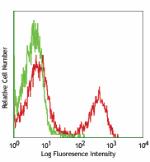
C57BL/6 mouse splenocytes stained with H57-597 APC -
Biotin anti-mouse TCR β chain
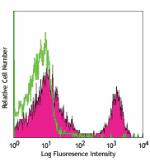
C57BL/6 mouse splenocytes stained with biotinylated H57-597,... 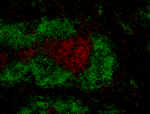
C57BL/6 mouse frozen spleen section was fixed with 4% parafo... -
FITC anti-mouse TCR β chain

C57BL/6 mouse splenocytes stained with H57-597 FITC -
PE anti-mouse TCR β chain

C57BL/6 CD3+ splenocytes stained with H57-597 PE and TCRγ/δ ... -
PE/Cyanine5 anti-mouse TCR β chain
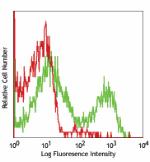
C57BL/6 mouse splenocytes stained with H57-597 PE/Cyanine5. -
Purified anti-mouse TCR β chain
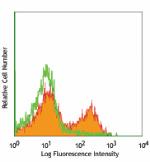
C57L/6 splenocytes stained with H57-597 purified, followed b... 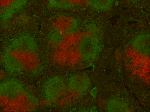
Fresh, frozen mouse spleen was stained with purified TCR β c... -
Alexa Fluor® 488 anti-mouse TCR β chain

C57BL/6 mouse splenocytes stained with H57-597 Alexa Fluor® ... -
Alexa Fluor® 647 anti-mouse TCR β chain
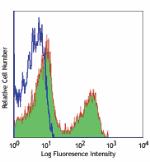
C57BL/6 splenocytes stained with H57-597 Alexa Fluor® 647 
C57BL/6 mouse frozen spleen section was fixed with 4% parafo... -
APC/Cyanine7 anti-mouse TCR β chain
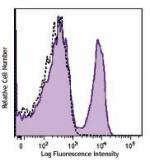
C57BL/6 mouse splenocytes were stained with TCR β (clon... -
PE/Cyanine7 anti-mouse TCR β chain
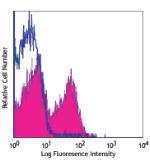
C57BL/6 mouse splenocytes stained with H57-597 PE/Cyanine7 -
Alexa Fluor® 700 anti-mouse TCR β chain
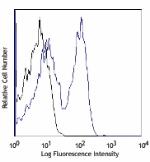
C57BL/6 mouse splenocytes stained with H57-597 Alexa Fluor&r... -
Pacific Blue™ anti-mouse TCR β chain
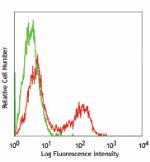
C57BL/6 splenocytes stained with H57-597 Pacific Blue™ -
Brilliant Violet 421™ anti-mouse TCR β chain
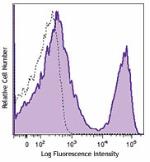
C57BL/6 mouse splenocytes were stained with TCR β (clone H57... -
PerCP/Cyanine5.5 anti-mouse TCR β chain

C57BL/6 splenocytes were stained with CD3e APC and TCR ß cha... -
Brilliant Violet 570™ anti-mouse TCR β chain
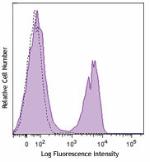
C57BL/6 mouse splenocytes were stained with TCR β (clon... -
Brilliant Violet 510™ anti-mouse TCR β chain
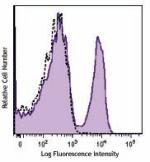
C57BL/6 mouse splenocytes were stained with TCR β (clone H57... -
Purified anti-mouse TCR β chain (Maxpar® Ready)

Mouse splenocytes stained with 143Nd-anti-TCRβ (H57-597) and... -
Alexa Fluor® 594 anti-mouse TCR β chain
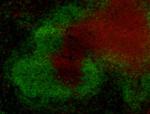
C57BL/6 mouse frozen lymph node sections were fixed with 4% ... 
C57BL/6 mouse splenocytes were stained with TCR β (clone H57... -
PE/Dazzle™ 594 anti-mouse TCR β chain
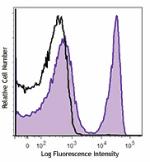
C57BL/6 mouse splenocytes were stained with TCR-β (clon... -
Brilliant Violet 605™ anti-mouse TCR β chain

C57BL/6 mouse splenocytes were stained with TCR β (clon... -
Brilliant Violet 711™ anti-mouse TCR β chain
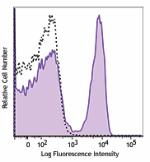
C57BL/6 mouse splenocytes were stained with TCR β (clon... -
APC/Fire™ 750 anti-mouse TCR β chain

C57BL/6 splenocytes were stained with TCR γ/δ PE... 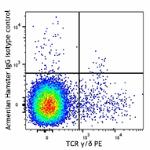
-
TotalSeq™-A0120 anti-mouse TCR β chain
-
Brilliant Violet 785™ anti-mouse TCR β chain

C57BL/6 splenocytes were stained with CD3 APC and anti-mouse... -
Brilliant Violet 650™ anti-mouse TCR β chain

C57BL/6 Splenocytes were stained with CD3 APC and anti-mouse... -
Ultra-LEAF™ Purified anti-mouse TCR β chain

C57BL/6 CD3+ splenocytes stained with H57-597 PE ... -
TotalSeq™-C0120 anti-mouse TCR β chain
-
TotalSeq™-B0120 anti-mouse TCR β chain
-
Spark Red™ 718 anti-mouse TCR β chain (Flexi-Fluor™)
 Login / Register
Login / Register 












Follow Us